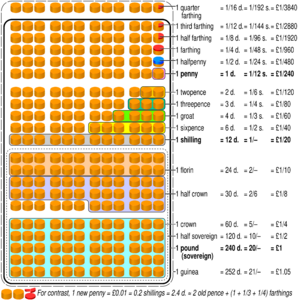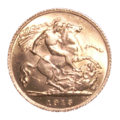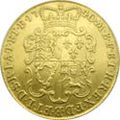List of British banknotes and coins facts for kids
British Banknotes and Coins are the money used in the United Kingdom. This includes England, Scotland, Wales, and Northern Ireland. Money helps us buy things and save for the future.
Contents
Coins
British coins have changed a lot over time. Before 1971, the money system was quite different from today.
Old Coins: Before 1971
Before 1971, the UK used a system called "pre-decimal" currency. It was a bit complicated!
- There were 12 pence (d) in one shilling (s).
- There were 20 shillings in one pound (£).
- This meant there were 240 pence in one pound.
For example, if you had 2 pounds, 14 shillings, and 5 pence, you would write it as £2 14s 5d.
Some old coins had interesting names:
- Farthing: This was a very small coin, worth a quarter of a penny. The name "farthing" means "fourth part."
- Halfpenny: Worth half a penny. People often called it a "ha'penny."
- Penny: The basic unit. People sometimes called it a "copper."
- Threepence: Worth three pence. It was sometimes called a "thripp'ny bit."
- Sixpence: Worth six pence. People often called it a "tanner."
- Shilling: Worth 12 pence, or one-twentieth of a pound. People called it a "bob."
- Florin: Worth two shillings.
- Half Crown: Worth two shillings and six pence.
- Crown: Worth five shillings. Sometimes called a "dollar" because of its value compared to the US dollar.
- Sovereign: A gold coin worth 20 shillings, or one pound.
- Guinea: A gold coin that was worth 21 shillings.
New Coins: After 1971
On 15 February 1971, the UK changed to a "decimal" system. This made money much easier to use!
- Now, one pound (£) is divided into 100 pence (p).
- The old shilling became worth five new pence.
- For example, 72 pence can be written as £0.72 or 72p.
Here are the common coins used today:
| Name | Value | Notes |
|---|---|---|
| One penny | 1p | |
| Two pence | 2p | |
| Five pence | 5p | This coin replaced the old shilling. It was made smaller in 1990. |
| Ten pence | 10p | This coin replaced the old florin (two shillings). It was made smaller in 1992. |
| Twenty pence | 20p | This coin was first used in 1982. |
| Fifty pence | 50p | This coin was first used in 1969. It replaced the ten shilling banknote. It was made smaller in 1997. |
| One pound | £1 | This coin was first used in 1983. It replaced the one pound banknote. |
| Two pounds | £2 | This coin was first used for special events in 1986. It became a common coin in 1998. |
Some special coins are also made for collectors or for their gold/silver value:
- Sovereign: A gold coin worth £1. It's mainly a special coin now, not used for everyday shopping.
- Britannia: Gold and silver coins that come in different weights and values.
- Five pounds: A special coin, often made for collectors, that replaced the old crown coin.
Banknotes
Banknotes are the paper or plastic money we use. In the UK, the Bank of England issues most banknotes. Banks in Scotland and Northern Ireland also print their own notes.
Old Banknotes: Before 1971
Before decimalisation, there were a few banknotes:
| Name | Value | Notes |
|---|---|---|
| Ten shilling note | 10/- (£0.5) | People often called this a "ten bob note" or "half a quid." It was used until 1970. |
New Banknotes: After 1971
After 1971, banknotes changed to fit the new decimal system. The Bank of England often redesigns notes, making them safer and more modern. Newer notes are made of plastic (polymer), which makes them last longer.
Here are the common banknotes used today:
| Name | Value | Notes |
|---|---|---|
| £1 note | £1 | This note was stopped in 1988 by the Bank of England. However, some banks in Scotland and Northern Ireland still print and use £1 notes. People often call a pound a "quid." |
| £5 note | £5 | People often call this a "fiver." The latest £5 notes are made of plastic. |
| £10 note | £10 | People often call this a "tenner." The latest £10 notes are made of plastic. |
| £20 note | £20 | People often call this a "score." The latest £20 notes are made of plastic. |
| £50 note | £50 | People often call this a "bullseye." The latest £50 notes are made of plastic. |
| £100 note | £100 | These notes are only issued by banks in Scotland and Northern Ireland, not the Bank of England. |
The Bank of England regularly updates its banknotes. The newest designs are called "Series G" and are made from polymer (a type of plastic). The £5, £10, £20, and £50 notes are all now made of this new, durable material.
Images for kids





